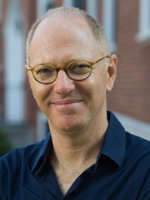Programmable on-chip DNA compartments as “artificial cells”
to

Roy Bar-Ziv, Ph.D.
Associate Professor
Weismann Institute of Science
In 2003, Dr. Bar-Ziv started his laboratory at the Department of Materials and Interfaces at the Weizmann Institute to focus on the study of gene expression in man-made cellular micro-compartments, and combine condensed-matter physics, molecular biology, and materials science. He began by using microfluidic droplets of water-in-oil as reactors for protein synthesis. His work led to a serendipitous discovery of many-body effects and collective motion not related to the content of the droplets, but to the their long-range hydrodynamic interactions in flow. These observations have created a surge of interest as a new system to study fundamentals of non-equilibrium statistical physics with practical applications in microfluidics. In a related effort, the lab pursued a biochip approach to study gene expression in spatially segregated, dense phases of immobilized DNA that mimic cellular compartments. Experiments on the biochip revealed how machinery enzymes sense the density and directionality of genes, and allowed reconstruction of protein synthesis coupled to assembly into complexes. In a recent advance, his lab created a highly miniaturized cell-free system on a silicon chip. A series of tiny linked compartments were fabricated on the chip in which DNA-driven reactions occurred, with materials flowing into and diffusing among the compartments. The system recreated oscillating protein-expression patterns and protein gradients, and provides a stepping-stone to creating “artificial cells” on a chip.
Summary
For his WALS lecture, Dr. Bar-Ziv will discuss the assembly of two-dimensional DNA compartments that are fabricated in silicon. These artificial cells are capable of metabolism, programmable protein synthesis, and communication. Metabolism is maintained by continuous diffusion of nutrients and products through a thin capillary, connecting protein synthesis in the DNA compartment with the environment. The Bar-Ziv laboratory programmed protein-expression cycles, autoregulated protein levels, and a signaling-expression gradient, equivalent to a morphogen, in an array of interconnected compartments at the scale of an embryo. Gene expression in the DNA compartment reveals a rich, dynamic system that is controlled by geometry, offering a means for studying biological networks outside a living cell.
This page was last updated on Wednesday, August 11, 2021